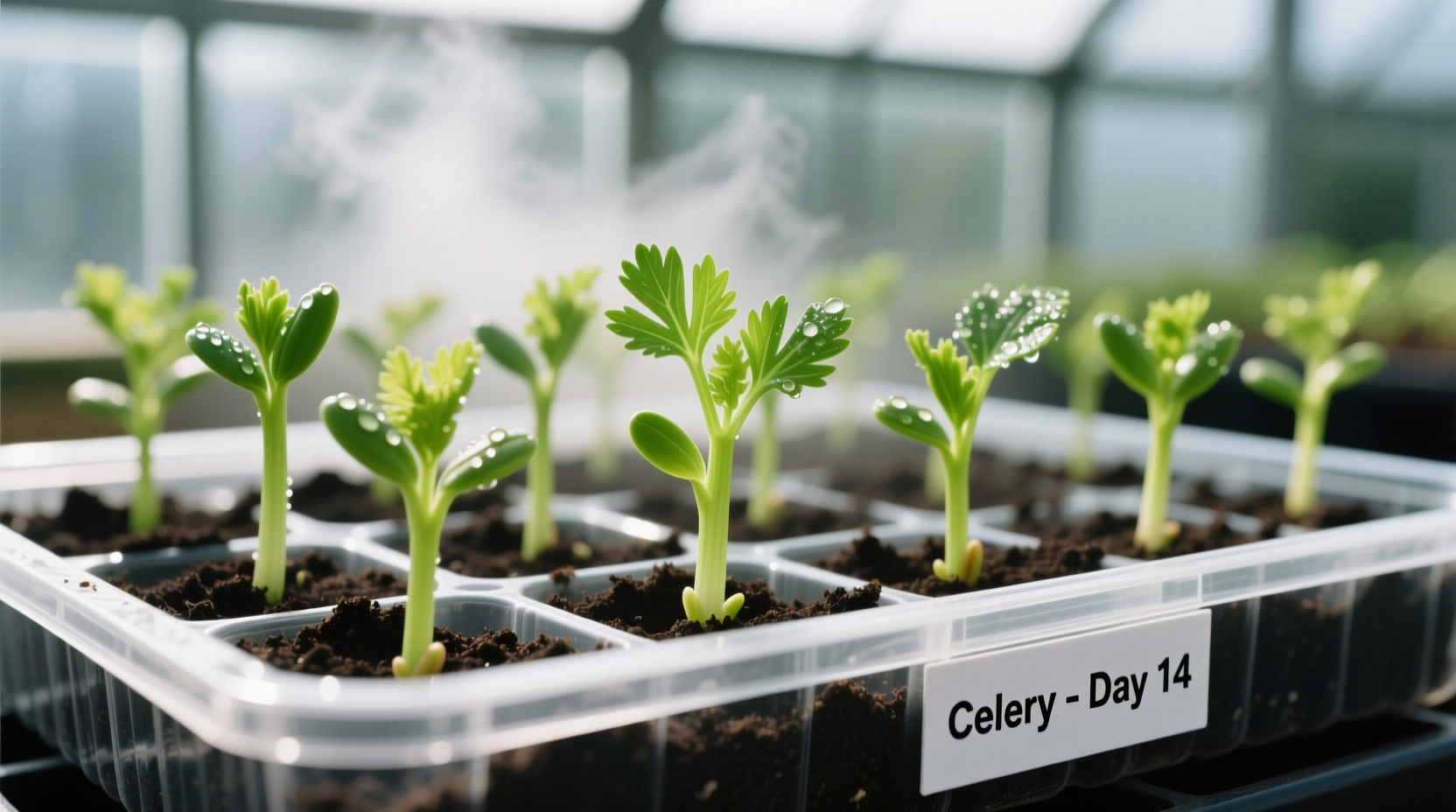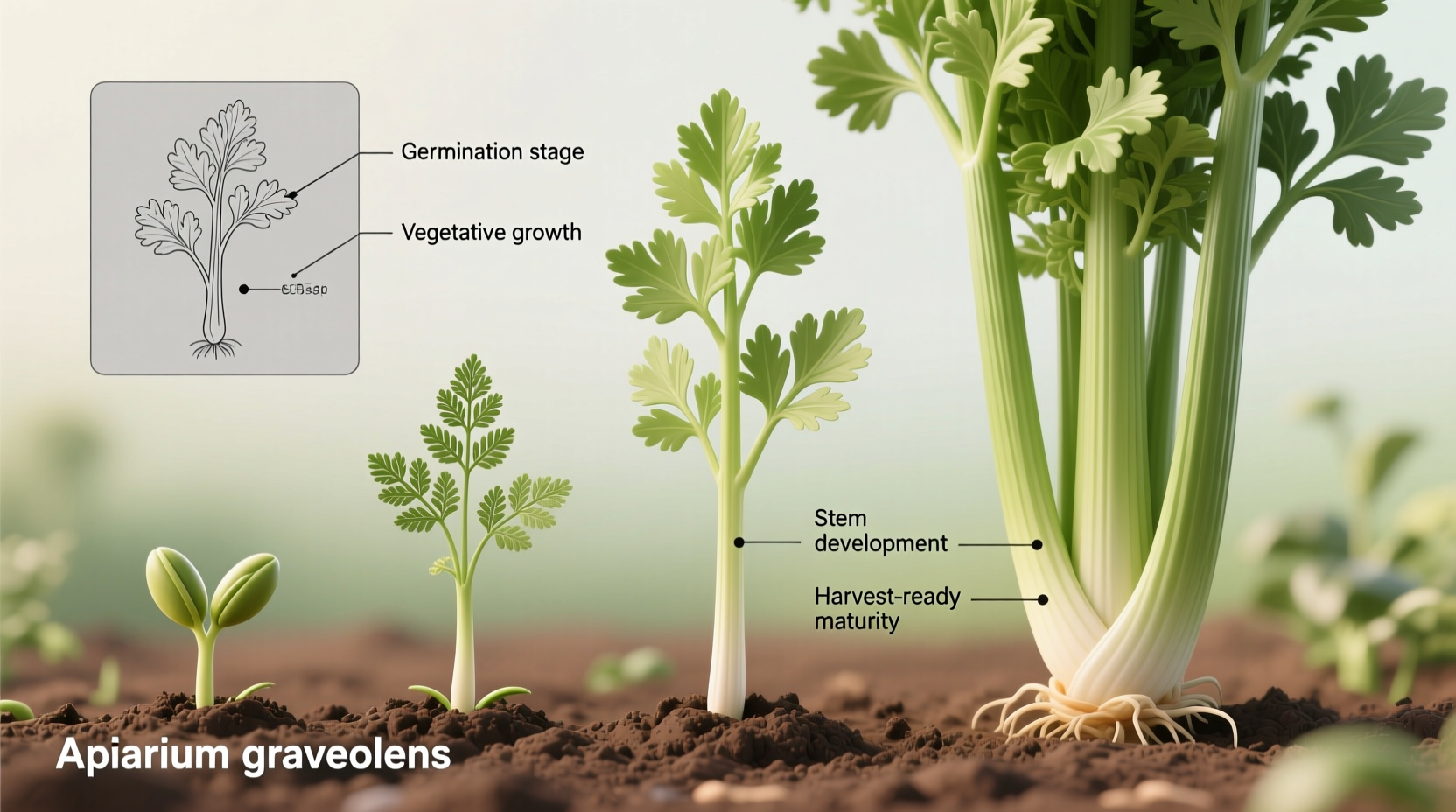Nothing beats the fresh, vibrant flavor of homegrown celery in your soups, salads, and snacks. Unlike store-bought varieties that often lack depth, garden-fresh celery delivers superior crunch and aromatic complexity that elevates every dish. Whether you're working with limited space or have a sprawling garden, this comprehensive guide walks you through every step to cultivate thriving celery plants that yield abundant harvests.
Understanding Celery's Unique Growing Requirements
Celery (Apium graveolens) belongs to the Apiaceae family and demands specific conditions that differ from many common garden vegetables. This cool-season crop originated in Mediterranean wetlands and retains its preference for consistently moist environments. Unlike hardier vegetables, celery won't tolerate drought stress or extreme temperature fluctuations, making proper planning essential for success.
| Growing Factor | Optimal Range | Consequences of Deviation |
|---|---|---|
| Soil pH | 6.0-6.8 | Nutrient deficiencies below 5.5; reduced uptake above 7.2 |
| Water Needs | 1-2 inches/week | Stringy, bitter stalks with inconsistent moisture |
| Temperature | 60-70°F (15-21°C) | Bolting above 75°F; growth cessation below 50°F |
| Days to Maturity | 130-140 days | Underdeveloped flavor and texture if harvested early |
Your Step-by-Step Celery Growing Journey
Phase 1: Starting Seeds Indoors (Weeks 10-12 Before Last Frost)
Celery's long growing season necessitates an early start indoors. The University of California Cooperative Extension confirms that direct seeding rarely succeeds in most climates due to celery's slow germination and delicate seedlings (UC ANR, 2023).
- Seed selection: Choose varieties like 'Tango' (disease-resistant) or 'Golden Self-Blanching' (milder flavor)
- Planting medium: Use sterile seed mix with excellent drainage; avoid garden soil
- Sowing depth: Press seeds onto surface (they need light to germinate) and mist gently
- Germination conditions: Maintain 70°F (21°C) with consistent moisture; expect sprouts in 10-14 days

Phase 2: Transplanting Seedlings (After Last Frost Date)
Transplant when seedlings reach 6 inches tall and outdoor temperatures remain above 50°F (10°C) consistently. The USDA Agricultural Research Service notes that celery's shallow root system makes careful transplanting critical for establishing healthy plants (USDA ARS, 2024).
- Soil preparation: Amend with 3-4 inches of compost; ensure soil remains consistently moist
- Spacing: Plant 8-10 inches apart in rows 18-24 inches apart
- Planting depth: Bury up to first set of true leaves to encourage stronger growth
- Mulching: Apply 2-3 inches of straw immediately after transplanting to retain moisture
Phase 3: Ongoing Care Through Growing Season
Celery's reputation as challenging stems from its uncompromising water needs. Unlike drought-tolerant vegetables, celery requires consistent moisture levels to prevent stringy, bitter stalks.
Water Management Essentials
- Provide 1-2 inches of water weekly through drip irrigation or soaker hoses
- Maintain soil moisture at 60-70% capacity (like a damp sponge)
- Water early morning to reduce evaporation and fungal risks
- Check soil moisture daily during hot spells
Fertilization Schedule
- Apply balanced fertilizer (10-10-10) every 3-4 weeks
- Supplement with calcium nitrate if leaf edges turn brown
- Stop fertilizing 3 weeks before harvest to prevent excessive nitrate accumulation
Blanching for Superior Flavor
Traditional blanching (遮光处理) reduces bitterness and creates tender stalks. Start when plants reach 12 inches tall:
- Cardboard method: Wrap stalks with cardboard tubes secured by twine
- Soil banking: Gently mound soil around base (requires careful watering adjustment)
- Duration: Blanch for 10-14 days before harvest for optimal results
Harvesting and Storage Techniques
Harvest celery when stalks reach 8-10 inches tall from the base. The most reliable indicator is firmness - gently squeeze stalks; they should feel solid with no hollow spaces.
- Harvest method: Cut individual outer stalks first or harvest entire plant at soil line
- Best time: Early morning when stalks are most hydrated
- Storage: Wrap in aluminum foil and refrigerate for up to 4 weeks
- Preservation: Freeze chopped celery in portions for cooking (not salads)
Troubleshooting Common Growing Challenges
Even with careful planning, celery growers encounter specific issues. Understanding these problems helps maintain plant health throughout the season.
Pest Management
- Aphids: Spray with insecticidal soap; encourage ladybugs with companion planting
- Armyworms: Hand-pick at night; use BT spray for severe infestations
- Leaf miners: Remove affected leaves immediately; avoid broad-spectrum pesticides
Disease Prevention
- Leaf spot: Rotate crops annually; avoid overhead watering
- Pink rot: Improve soil drainage; apply calcium supplements
- Black heart: Ensure consistent moisture; supplement with calcium nitrate
Advanced Growing Strategies
Once you've mastered basic cultivation, these techniques can enhance your celery harvest:
- Succession planting: Sow new seeds every 2-3 weeks for continuous harvest
- Container growing: Use 5-gallon pots with drainage holes for patio gardening
- Companion planting: Grow near tomatoes, cabbage, or beans to deter pests
- Cold frame extension: Protect plants into fall with simple cold frames
Frequently Asked Questions
Can I grow celery in containers?
Yes, celery grows well in containers with proper care. Use a 5-gallon pot with drainage holes, fill with high-quality potting mix amended with compost, and maintain consistent moisture. Container-grown celery requires more frequent watering and fertilization than garden-planted varieties but produces excellent results when monitored closely.
Why are my celery stalks stringy and tough?
Stringy celery typically results from inconsistent watering or harvesting too late. Celery requires steady moisture levels throughout growth - even brief dry periods cause fibrous development. Ensure 1-2 inches of water weekly and harvest when stalks reach 8-10 inches tall from the base. Varieties like 'Tango' naturally produce less fibrous stalks.
How do I prevent celery from bolting?
Prevent bolting by maintaining consistent temperatures below 75°F (24°C). Start seeds early indoors, transplant after danger of frost has passed, and provide afternoon shade during heat waves. Mulch heavily to keep roots cool, and avoid planting too early when temperatures still dip below 50°F (10°C) regularly. Choosing bolt-resistant varieties like 'Ventura' also helps.
What's the best way to store harvested celery?
For maximum freshness, wrap celery stalks in aluminum foil and store in the refrigerator's crisper drawer. The foil allows ethylene gas to escape while maintaining humidity. Properly stored celery stays crisp for 3-4 weeks. Avoid plastic bags, which trap moisture and accelerate spoilage. For longer storage, chop and freeze celery in cooking portions.











 浙公网安备
33010002000092号
浙公网安备
33010002000092号 浙B2-20120091-4
浙B2-20120091-4